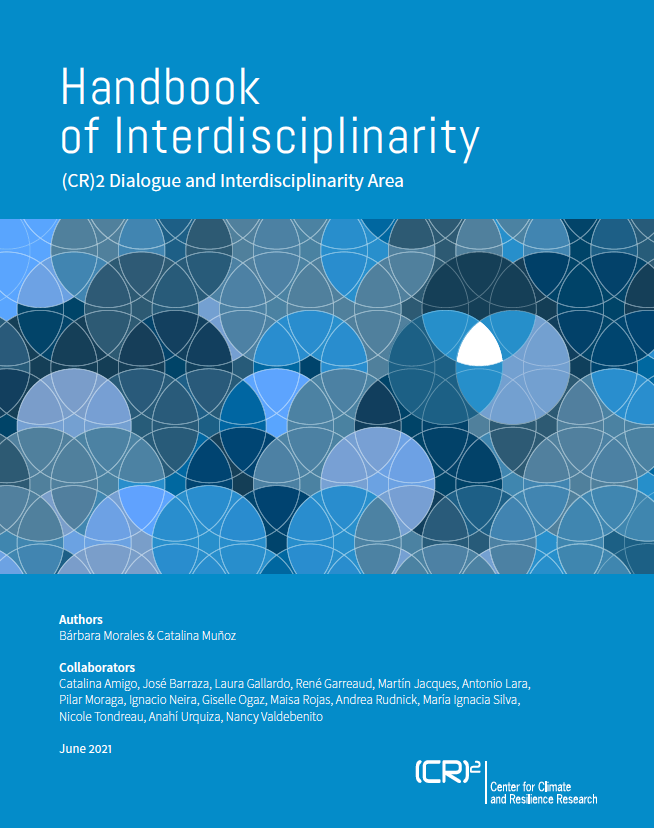Since its creation in 2013, the Center for Climate Science and Resilience (CR)2 has made major strides in fostering interdisciplinary research, at the structural, conceptual and methodological levels. In the framework of (CR)2’s purpose—to deepen our understanding of climate change systems, processes and impacts in Chile—dialogue among disciplines becomes a mission in itself, and one of the cornerstones of the Center.
This Manual presents (CR)2’s experience with interdisciplinarity and we hope it can serve as a tool to build more bridges between disciplines represented at (CR)2, while at the same time closing the gaps and overcoming the barriers that still hinder their integration. This handbook is the result of a review of the scientific literature, observations documented by different work teams and meetings held at (CR)2 over the past two years. Its aim is to provide specific tools to facilitate interdisciplinary work, covering at least the methodologies and collaborative disposition that must be addressed at the different scales of work conducted at the Center (individual, collective and organizational). More specifically, this handbook is intended to:
1. Raise awareness of (CR)2’s interdisciplinary experience; the efforts made and the obstacles that still have to be overcome.
2. Demonstrate, on the basis of (CR)2’s experience, the need to adopt certain principles (individual and collective) to further interdisciplinary work.
3. Provide conceptual and methodological tools for undertaking an interdisciplinary project or investigation, and highlight the need for follow up and evaluation.
4. Contribute to building bridges and closing gaps among the Center’s disciplines, to promote greater interaction and more effective collaboration.
All of the above will ultimately help to better our understanding of the processes and impacts of the climate system in Chile while meeting the challenges we face in achieving sustainable development and our commitments under related international agreements.





